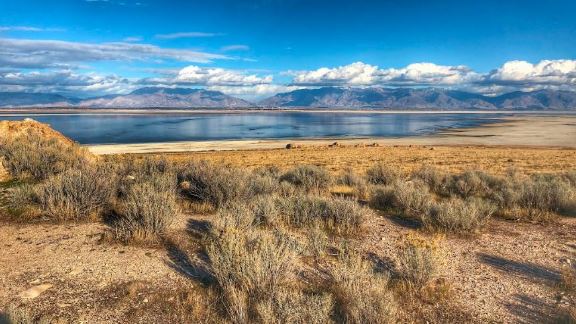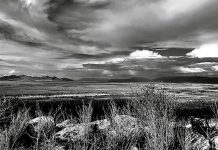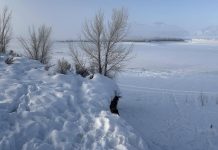SALT LAKE CITY (Mar. 21, 2023) – Utah’s snowpack is holding strong and making steady gains as we reach the time of year when our snowpack typically peaks.
Although that’s good news for Utah’s water supply, it may cause flooding, says a statement issued Tuesday by the Utah Division of Water Resources. The state is working closely with counties and cities to mitigate the risk of flooding, it adds.
“We want a gradual melt off during the spring that will not overwhelm our rivers and streams,” Candice Hasenyager, director of the Division of Water Resources, said. “The way our snowpack melts is something our division and the Utah Division of Emergency Management is monitoring closely.”
Last month was one of the snowiest recorded Februarys in the state of Utah. Even though the freezing temperatures have been frustrating for some, this amount of water is significant for our dry state. In October of last year, 96% of
Utah was in a severe drought. Today, that number is only 39%.
“We have a chance to take full advantage of this year’s snowpack by taking steps to be drought resilient,” Hasenyager said. “If you’re a farmer, check out the Agricultural Optimization Program and if you’re a resident, look for tips and tricks on SlowtheFlow.org. All the water provided by mother nature means we don’t need to irrigate as much to make things grow.”
At-a-glance highlights:
-
According to the Natural Resources Conservation Service in its latest report, new records for snow water equivalent are being set at Utah’s SNOTEL sites. As of March 1st, 10 sites were reporting a record high amount of SWE compared with the last 30 years, and 7 more were second highest. The Vernon Creek SNOTEL at the south end of the Tooele watershed already has 231% of its typical peak snowpack! Four other SNOTEL sites also have around double the amount of snow that they would have at their typical peak. The vast majority of Utah’s 137 SNOTEL sites are at (or above) the 85th percentile for SWE compared to their period of record, with 31 in the top five percent.
-
The Utah Division of Emergency Management is encouraging community members to work with their local public works or emergency management office and help clear ditches, streambeds, canals and culverts of leaves, branches, trash and other debris. Often flooding happens due to debris rather than more water than could normally be handled. Residents can learn more about how to protect their property by visiting floodhazards.utah.gov
-
The Utah Division of Water Rights is working with the owners and operators of each high-hazard dam to monitor the condition of each as water level increases within the reservoir. The hazard level of a dam is determined by the potential impact to life and property a failure would have. A high-hazard dam is one which, if it should fail, would result in loss of life or significant property damage.
-
The Utah Division of Recreation is pushing responsible recreation this spring and summer. Swift water can be extremely dangerous, even for experienced swimmers, due to its strong currents and unpredictable nature. Always wear a life jacket when near rivers or streams, even if you do not plan to enter the water.
-
Great Salt Lake has risen about two feet since its historic low two set in early November 2022. This is due to direct precipitation and inflows to the lake. For context, the lake hardly rose a foot all of last year. We are off to a good start as we look toward spring runoff!
-
Twenty-four of the 47 reservoirs the division monitors are below 55%, which is about the same as last year but still about 10% lower than normal for this time of year.
-
Of the 80 measured streams, 39 are currently flowing below normal. The number of streams measured has decreased due to ice on the stream gauges.
-
Residents can find water-saving tips at SlowtheFlow.Org.







